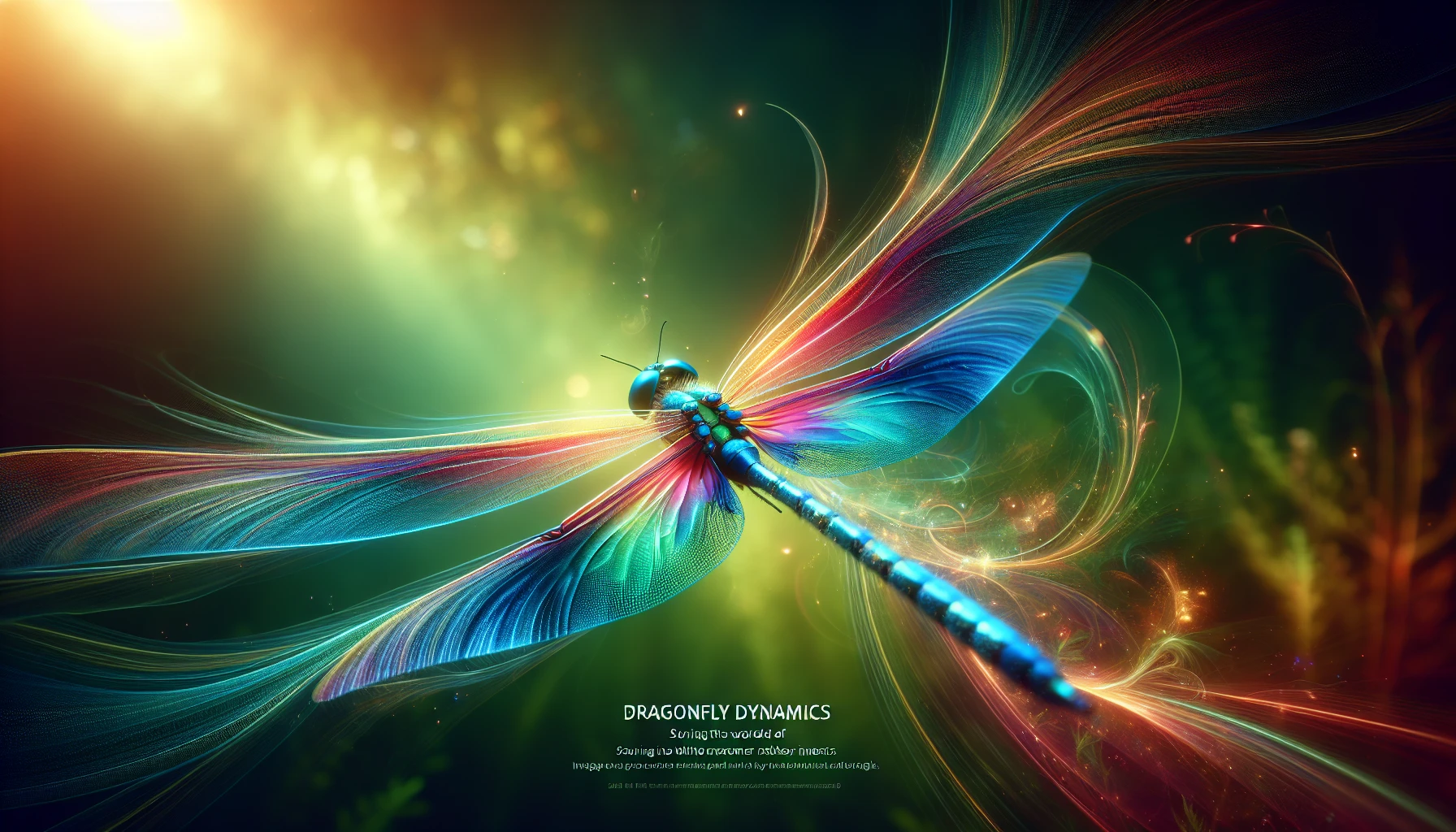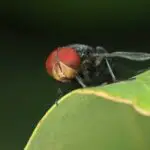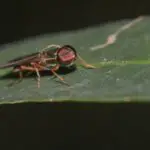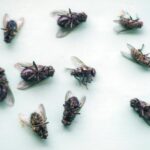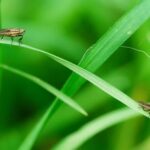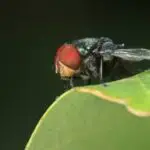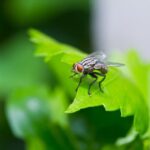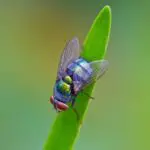Dragonfly Dynamics: Soaring into the World of Skimmer Insects
Introduction to Dragonflies
Welcome to the enchanting world of dragonflies, where these aerial acrobats dance across the water and sky with a grace that captivates the observer. These skimmer insects are not only a delight to watch but also play a pivotal role in the balance of various ecosystems. In this introduction, we’ll dive into the essence of dragonflies and highlight their remarkable journey from water nymphs to gossamer-winged adults.
Dragonflies are easily mistaken for their close relatives, the damselflies. The main distinction lies in their rest pose: dragonflies hold their wings open flat, while damselflies fold their wings together above their bodies. These insects, which belong to the order Odonata, showcase a range of dazzling colors and fast, agile flight patterns. They grace every continent except Antarctica, embodying resilience and adaptability in diverse environments.
One might wonder, “What makes dragonflies so significant to nature?” Well, dragonflies are apex predators in their larval and adult life stages. Their voracious appetite for mosquitoes and other small insects makes them an integral part of natural pest control. By maintaining insect populations, they help prevent outbreaks that could harm both human health and agricultural interests.
Delving further into dragonfly dynamics reveals a fascinating life cycle that could rival metamorphosis stories of other well-known insects. After all, these creatures begin their lives as nymphs in water, only later to emerge into the air, undergoing a dramatic transformation. To understand more about insect transformation and life stages, take a peek into the life cycle of a cockroach, another marvel of nature that has mastered the art of survival over millennia.
For now, let’s appreciate dragonflies for the irreplaceable part they play on the planet. As you observe a dragonfly skimming over a pond, remember you are witnessing a creature that has thrived on Earth since the days before the dinosaurs. Their extraordinary flight and ecological impact remind us of the delicate dance of nature, where every creature, no matter how small, plays a lead role in the story of life.
The Life Cycle of Dragonflies
Have you ever marveled at a dragonfly darting gracefully over a pond or through a meadow? These airborne acrobats are not only wonders to behold but also fascinating in the way they develop from a tiny egg into a stunningly agile adult. Let’s take a flight into the life cycle of dragonflies and unveil their astonishing transformation.
Eggs: The Humble Beginnings
Life for a dragonfly starts in water, as a female lays her eggs on the surface, either singly or in clusters, depending on the species. Some use an impressive technique called oviposition, where they insert eggs into aquatic plants or mud. Imagine each egg as a microscopic time capsule, ready to burst into life!
The Nymph Stage: Underwater Survival
The next chapter of their lifecycle unfolds beneath the water’s surface, where dragonfly nymphs emerge from their eggs. These nymphs might lack the elegance of their adult counterparts, but don’t be fooled — they are voracious predators. With a unique, extendable lower lip, or labium, they snag unsuspecting prey like small fish or other insect larvae. If you’re curious to see what this stealthy hunter looks like, check out this detailed account on the British Dragonfly Society’s website.
The nymph stage is dragonflies’ longest life stage, and it’s a time of growth and development. Unlike butterflies that undergo complete metamorphosis, dragonflies experience what’s known as incomplete metamorphosis. They don’t have a pupal stage; instead, they molt up to 15 times as nymphs, each time emerging larger and one molt closer to adulthood.
Metamorphosis: A Spectacular Transformation
When a nymph is finally ready to become an adult, it climbs out of the water, often onto a plant stem, and begins the process of metamorphosis. The skin on its back splits open, and the adult dragonfly wriggles out. This moment is a dramatic change, as it goes from an aquatic life to an aerial one. The newborn adult, known as a teneral, is soft-bodied and highly vulnerable at first. It must wait for its exoskeleton to harden and its wings to strengthen before it can embark on its maiden flight. Witnessing this incredible transformation is a real-life wonder, and you can get a taste of it in this captivating video that captures the birth of a dragonfly.
After its dramatic emergence, the adult dragonfly spends a few days to several weeks maturing. During this time, it develops its full coloration and becomes capable of reproduction, completing the cycle as it seeks out mates and lays eggs of its own.
In essence, the life cycle of a dragonfly is as enchanting as it is intricate, presenting a never-ending narrative of transformation and resilience. From the water to the sky, these creatures continue to captivate and inspire with their dynamic lives.
Dragonfly Habitats Across the Globe
Ever wondered where those mesmerizing winged acrobats of the wetlands, known as dragonflies, hang their hats for the night? These skimmers are not just about pretty wings and darting flights; their choice of habitat is as intricate as the lacy patterns on their wings. Let’s dive into the diverse dwellings of dragonflies and understand why preserving their wetland homes is more than just about safeguarding beauty.
To begin our global journey, imagine the sun-kissed banks of a serene pond, where reeds sway lightly, and the air hums with the buzz of dragonflies zipping by. These environments, filled with life, serve as the perfect stage for our dragonfly friends to perform their aerial ballet. From ponds to lakes, from slow-flowing rivers to the rain-soaked margins of a tropical forest, dragonflies are there, hovering and guarding their territory with the poise of a skilled warrior.
Now, picture this: a marshland, alive with croaks and splashes, home to the glinting colors of the dragonfly. Wetlands are crucial for these insects; they not only provide a smorgasbord of prey but also act as nurseries for their young. Dragonfly larvae, known as nymphs, thrive in these underwater wonderlands, honing their hunting skills and dodging predators until they’re ready to shed their aquatic confines and soar into the sky as adults.
But it’s not just about water; dragonflies are connoisseurs of the sunlight, basking in its warmth to power up for their next chase. Their habitats, while predominantly focusing on wetlands, can also expand to the drier edges where meadows meet marshes. It’s here, among the wildflowers and tall grasses buzzing with life, that they hunt, mate, and continue the cycle of life that their species has perfected over eons.
Our adventures may take us to the far corners of the world—be it the dragonfly-laden bogs of the northern hemisphere or the lotus-choked pools of the Asian tropics—but one common thread ties them all: the need for wetland conservation. Without these havens, the dragonfly’s dance could dwindle, and we’d lose not just a predator that keeps pesky mosquitoes at bay but an indicator of our ecosystem’s health. As passionate stewards of the environment, it’s our duty to safeguard these areas. Understanding the importance of wetlands (link to a related article) is critical for maintaining the biodiversity that dragonflies represent and many other species rely upon.
Diverse, vibrant, and ecological powerhouses—dragonfly habitats are tiny but mighty realms that deserve our admiration and immediate action. By conserving wetlands, we’re not just protecting dragonflies; we’re preserving the intricate balance of life that sustains our planet. So let’s pledge to keep their world as enchanting as the mesmerizing beat of their wings.
Identifying Different Dragonfly Species
Embarking on the quest to differentiate the various dragonfly species can be as exhilarating as it is enlightening. Imagine wandering through the wetlands, equipped with a newfound savvy for recognizing the delicate intricacies of these aerial acrobats. From the broad-bodied chasers to the slender damselflies, the dragonfly domain is rich with diversity, and with a bit of guidance, you’ll be discerning these skimmers with the confidence of a seasoned entomologist.
Spotting the Hallmarks of Different Dragonflies
Begin your journey with the fundamentals: the wings and body. Dragonflies, or ‘true dragonflies’, boast two sets of robust, translucent wings that, when at rest, lie perpendicular to their elongated bodies. In contrast, the damselfly, a close cousin, carries its wings folded together above its slender frame. By noting these initial traits, you’re already on your way to cracking the dragonfly-damselfly enigma.
Let’s delve deeper and turn our gaze to color and size—a spectacle of hues and dimensions unfurls before us. The Ebony Jewelwing dons a metallic blue body with wings edged in lustrous black, while the Eastern Pondhawk flaunts a radiant green exoskeleton. Size can range from the petite Elfin Skimmer, barely an inch in length, to the impressive Green Darner, stretching over three inches from head to tail.
Behavior and Habitat: Keys to Identification
As vibrant as their colors are, dragonflies express their uniqueness through their behavior and habitats as well. The River Jewelwing, true to its name, is found adeptly maneuvering alongside flowing streams, its iridescent body shimmering against the rushing waters. Conversely, the Meadowhawk prefers the stillness of meadows, using its stealth and agility to surprise unsuspecting prey. By acquainting yourself with their preferred environments, you become privy to their secret worlds.
Take a moment to witness a marvel of nature through this visual guide to identifying these fascinating creatures.
Last, but certainly not least, consider the captivating dance of courtship and predation. Each species boasts a unique aerial display—from the mesmerizing mating wheel of the American Rubyspot to the relentless pursuit of prey by the Four-spotted Skimmer. Observing behavior not only aids identification but enriches the soul with the profound beauty of dragonfly dynamics.
Armed with this knowledge and a keen eye, you are now prepared to distinguish and appreciate the different dragonfly species that enliven our skies. Happy spotting!
Dragonfly Behavior and Diet
Step into the mesmerizing world of dragonflies, those splendid aerial acrobats that paint the canvas of our sky. You might wonder, what do dragonflies snack on throughout their high-flying escapades? Dragonflies are elite predators in their domain, primarily feeding on a plethora of insects that they catch with awe-inspiring precision. Their diet includes mosquitoes, flies, and even other smaller dragonflies, showing no mercy to those that become their targets.
Imagine a dragonfly, wings whirring, as it effortlessly snags a mosquito mid-flight. This impeccable hunting technique is known as “hawking,” where dragonflies use their acute vision to track and intercept prey with their spiny legs. An ambush in the air, the dragonfly’s hunting strategy is akin to that of a highly skilled fighter jet pilot locking onto its target.
Beyond their predatory prowess, dragonflies exhibit fascinating behaviors that make them a topic of intrigue and admiration. Territory plays a significant role in the life of a dragonfly; males are often seen engaging in fierce aerial battles to defend their chosen domain, especially if it’s a prime spot with plenty of food and females. This territorial dance, while graceful, is a critical aspect of their survival strategy.
Dragonflies are true marvels of evolution, exhibiting behaviors as complex and vibrant as their iridescent wings. If we look closer into their life beyond the hunt, we find creatures that are not only predators but also skilled navigators of their environment, capable of motionless hovering, and backward flight. Such agility allows them to adapt and thrive in their habitats, much like the playful maneuvers some insects use to avoid predators.
Isn’t it astounding how these skimmers have perfected their craft over millennia? As you observe a dragonfly darting over a sun-kissed pond, take a moment to appreciate the intricate tapestry of life it weaves within each buzz and glide.
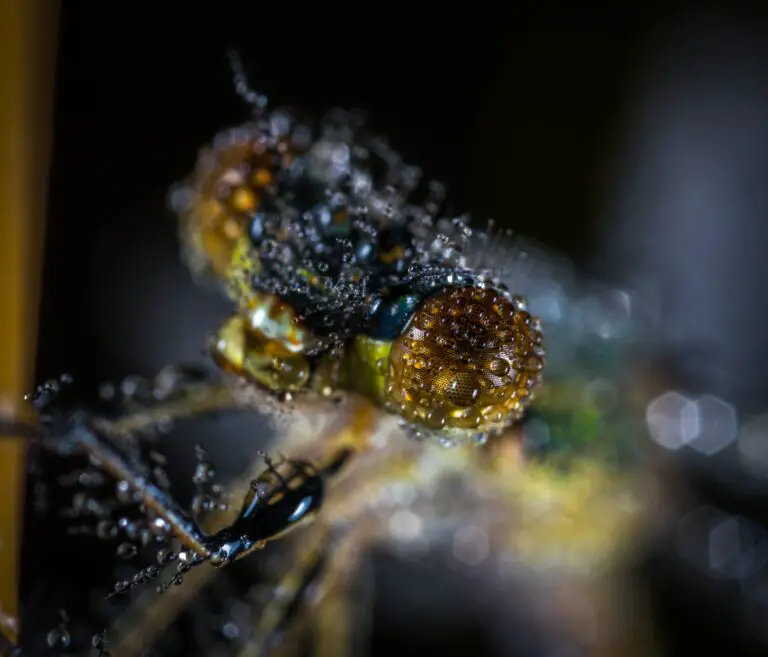
The Role of Dragonflies in Ecosystems
Picture a warm summer day by a still pond; the air hums with life. Among the throng of buzzing insects, one particularly graceful creature stands out: the dragonfly. Skimming over water surfaces with iridescent wings, dragonflies might seem to exist merely for our viewing pleasure. Yet, these skilled aerial acrobats play a pivotal role in the health of ecosystems worldwide.
As voracious predators in both their larval and adult stages, dragonflies are crucial in keeping mosquito populations in check. With a single dragonfly consuming dozens to hundreds of mosquitoes per day, they act as a natural form of pest control. This is more than just a convenient service for our backyard barbecues; it’s a critical function in preventing the spread of mosquito-borne diseases, such as malaria and Zika virus.
But the impact of dragonflies extends beyond mosquitoes. They are a part of a larger food web, preying on a variety of other insect pest species. In turn, they serve as a food source for birds, fish, and other wildlife, establishing themselves as an integral link in the chain of life. By exerting predation pressure on different insects, dragonflies help maintain a balance, allowing for diverse and healthy populations to flourish in their respective ecosystems.
Real-life implications of their role can be observed in agricultural fields, where dragonflies assist in controlling the population of insects that would otherwise devour crops. As a reflection of their environmental health, dragonflies are also used as bioindicators, signaling the quality of our wetlands. The presence and diversity of dragonflies can help scientists assess the ecological well-being of an area and guide conservation efforts.
Given the chance to observe a dragonfly’s life cycle, we find a masterclass in adaptability and survival. Their nymphs, which develop underwater, are equally effective hunters, seizing tadpoles, small fish, and aquatic insects. This underwater phase, often overlooked by the casual observer, is a testament to the dragonfly’s unseen yet significant role below the water’s surface.
Curious about these fascinating insects and their niche in the environment? Witness the dragonfly’s contribution to a vibrant and biodiverse ecosystem in the following video:
In essence, dragonflies are not just mesmerizing to watch; they are dynamic agents of ecological balance. Next time one catches your eye, remember that you’re gazing at a creature that is as important as it is beautiful—a true guardian of our natural world.
Dragonfly Migration Mysteries
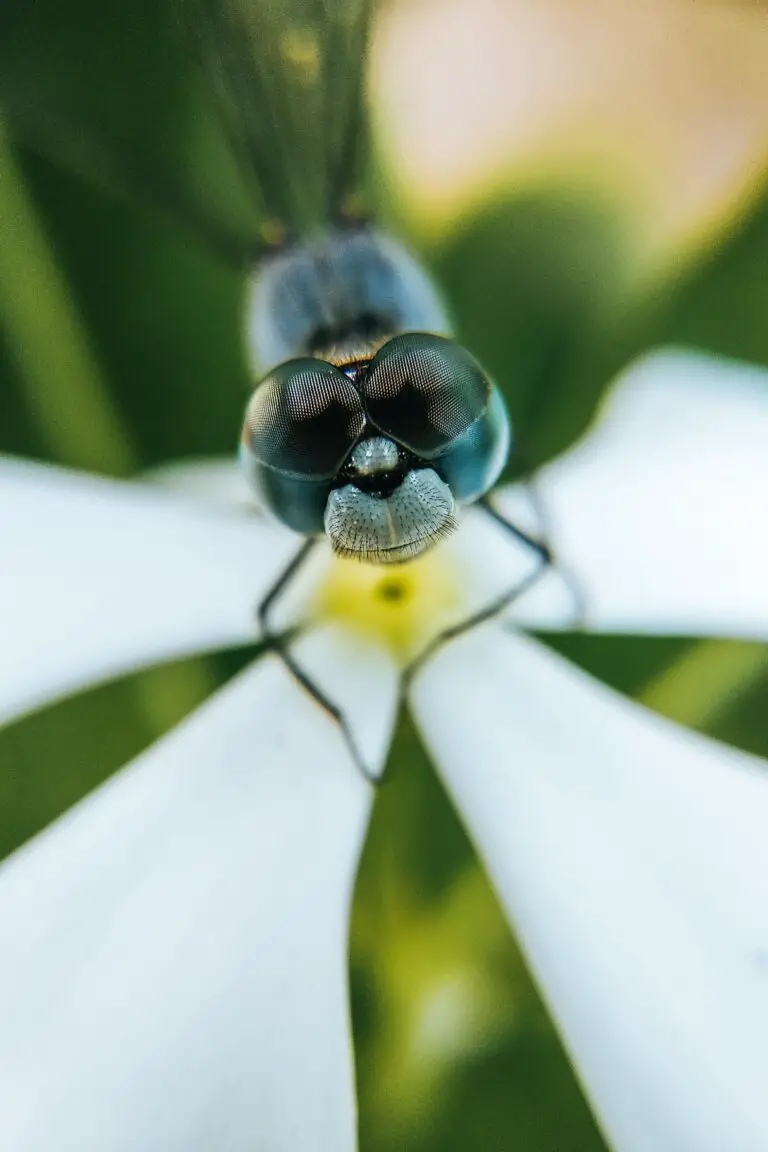
When we think of migration, the majestic voyage of birds and whales often springs to mind. But what about the dragonfly, that iridescent marvel that skims our waters with gossamer wings? Yes, dragonflies migrate too, and the spectacle is as mesmerizing as it is mystifying.
Among a myriad of dragonfly species, a select few are known to pack their tiny bags and set off on remarkable journeys. The globe skimmer, for example, is the long-haul traveler of the insect world. These dragonflies traverse continents and oceans, with some covering distances up to thousands of miles. Why do they embark on such strenuous voyages? The answer lies in a survival instinct as ancient as time.
Nature’s call to migrate is often triggered by the change of seasons. For dragonflies, the pursuit of warm weather and abundant food supplies are the motivating factors. As the northern landscapes cool, these agile fliers head south to bask in more favorable conditions, ensuring their life cycle continues.
But migration is not a leisurely journey; it’s fraught with perils. Predators, weather, and exhaustion are constant threats. Yet, the dragonfly’s adaptations for survival are nothing short of remarkable. Their exceptional navigation skills, honed by millennia of evolution, guide them across vast and varied terrains to their destinations.
Take the wandering glider, a species whose migration patterns reveal the profound link between dragonflies and ecological well-being. Researchers have observed that these aerial acrobats follow rain patterns, which are essential for their breeding. The existence of these rain pools predicts a boom in dragonfly populations, indicating the critical role of water bodies in their life cycle.
It is through the lens of these migrating dragonflies that we gain insight into the health of our environment. Their presence, or absence, serves as a barometer for the ecological changes taking place on our planet. As they soar across skies and continents, dragonflies bind the intricate web of life, reminding us of the fluid, dynamic nature of ecosystems.
How to Attract Dragonflies to Your Garden
Transforming your outdoor space into a haven for dragonflies is not just about aesthetic appeal; it’s about inviting nature’s own pest control into your garden. With their aerial agility, dragonflies are enticed by landscapes that cater to their life cycle and feeding habits. Let’s flit through the essentials of crafting a dragonfly-friendly ecosystem right outside your door.
Choosing the Right Plants
To set the stage for a dragonfly’s arrival, focus on plant selection. These winged wonders are particularly drawn to tall, sturdy plants they can perch upon, scanning for meals or potential mates. Consider adding native reeds or rushes along the edges of ponds, ensuring they’re sturdy enough to support a dragonfly’s weight. For a dazzle of color, flowering plants like Black-Eyed Susans and Purple Coneflowers not only add vibrancy to your garden but also attract a smorgasbord of insects for dragonflies to feast on.
Inviting Waters
Water features are the glistening jewels of dragonfly-real estate. A sun-drenched pond, free from fish that might snack on dragonfly larvae, offers an ideal breeding ground for these graceful predators. Be mindful to include shallow areas and flat stones for larvae, known as nymphs, to bask and climb upon as they transition into adulthood. A rain garden, with its moisture-loving plants, can mimic these conditions if a pond is not feasible, allowing these insects to thrive.
As your patience is rewarded and dragonflies begin to weave their way through your flora, you’ll find their hypnotic flights not only delightful to watch but also incredibly beneficial. They keep the mosquitoes at bay and add a layer of life to your greener-than-ever garden sanctuary.
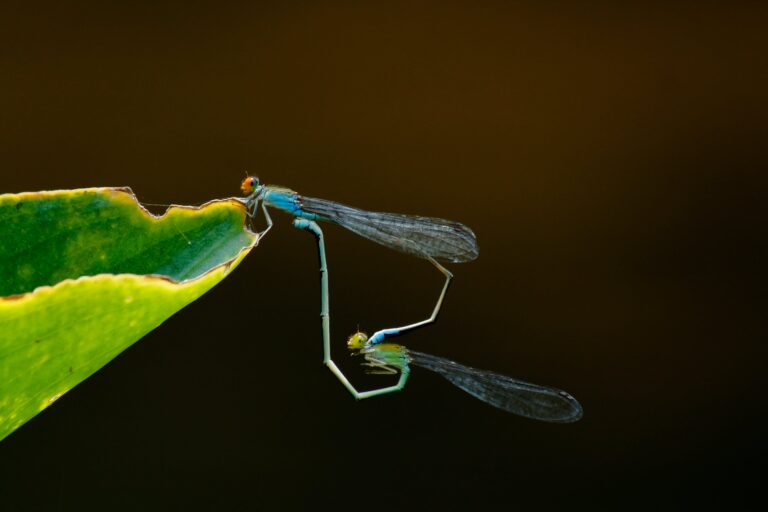
Conservation Efforts for Dragonfly Populations
When we think of conservation, our minds often swim to the likes of majestic whales or the regal tigers. But let’s shift our focus to the aerial acrobats of the insect kingdom, dragonflies. These winged wonders are not just fascinating to watch as they dart across water bodies with remarkable precision, they are also vital cogs in the ecological wheel.
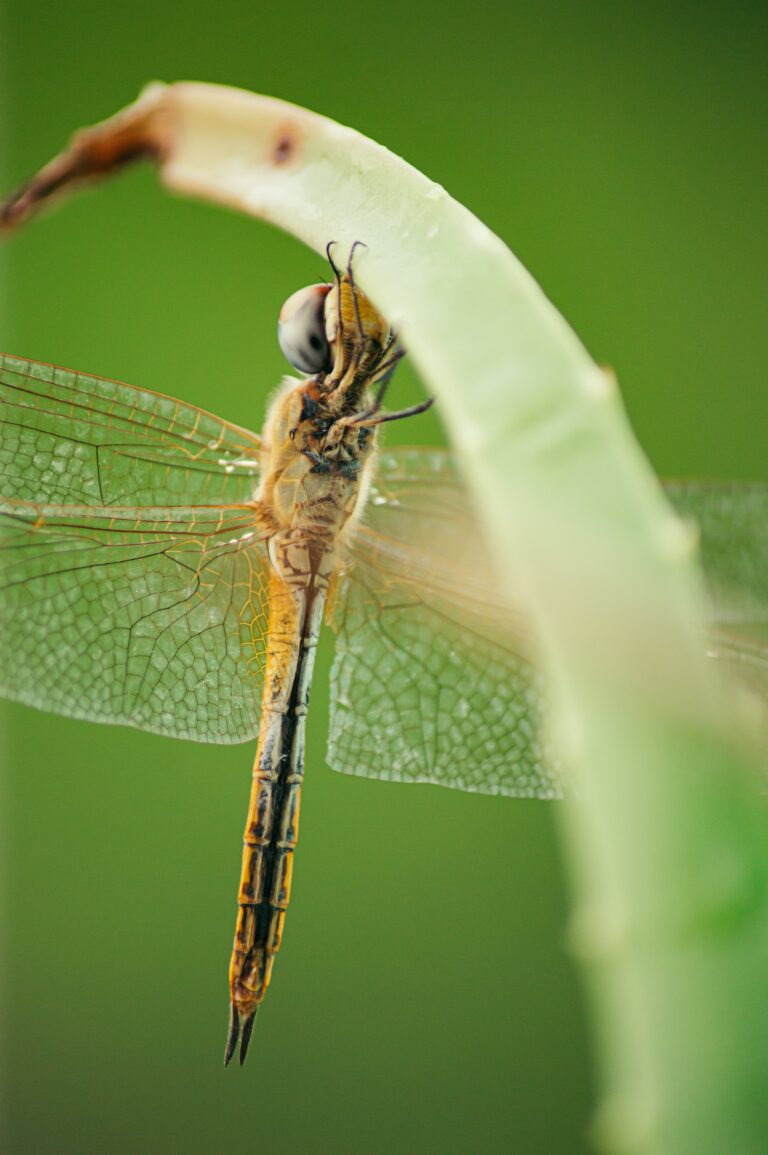
Dragonflies are indicators of a healthy ecosystem. Their mere presence is a sign of good water quality, making them essential for environmental monitoring. But here’s the deal: their habitats are under threat. The loss of wetlands, pollution, and climate change are creating a storm these skimmers can’t simply fly away from. It’s crucial that we implement conservation actions to ensure the dragonflies aren’t just a part of our past but thrive into the future.
Turning the Tide with Targeted Conservation
So, how are conservationists buzzing into action? Restoration of wetlands is at the forefront. By rejuvenating marshes and bogs, experts are giving dragonflies the breeding grounds they need to survive. Community science projects like Dragonfly Watch also help, where citizen scientists track and record dragonfly populations, pinpointing areas where help is needed the most.
Another vital step is reducing pesticide use. These chemicals may target pests, but they also clip the wings of our dragonfly friends. Organic farming practices and integrated pest management are some of the strategies being explored to cut back on chemicals without harming our food supply—a real-life balancing act!
Efforts don’t stop on the ground, though. Education plays a pivotal role, turning the public’s eye to the skies and inspiring people to advocate for these insects. Workshops, nature walks, and school programs spotlight the importance of dragonflies not only for biodiversity but for cultural significance in some regions.
Innovative approaches are also seeing the light of day. For example, the installment of dragonfly ponds in urban areas. Picture this: serene water bodies designed to mimic natural habitats, nestled in the hustle and bustle of our cities, offering a sanctuary for these creatures and an oasis for urban dwellers.
Dragonfly conservation isn’t just about preserving a species; it’s about maintaining the delicate balance of ecosystems. By taking a stance to protect their habitats, we’re not just saving the dragonflies; we’re safeguarding the intricate dance of life that sustains us all.
Frequently Asked Questions About Dragonflies
Have you ever found yourself gazing at a dragonfly as it maneuvers effortlessly through the air, wondering about the secrets behind its agile flight? Well, you’re not alone! Let’s dive into these fascinating creatures and find out what really makes them tick.
What astonishing skills do dragonflies possess?
Dragonflies are nature’s adept aerialists. They can hover in one spot, zip in various directions, and even mate mid-air! Imagine being able to do a 360-degree flip without the slightest pause. That’s just a glimpse into the repertoire of these nimble skimmers.
How do dragonflies impact the ecosystem?
Behind their delicate wings, dragonflies are voracious predators. They play a crucial role in keeping mosquito populations in check. Each dragonfly can eat dozens of mosquitoes a day! Watching a dragonfly is not merely observing an insect; it’s watching a natural form of pest control at work.
Are dragonflies indicators of water quality?
Absolutely! Dragonflies begin their life in water; thus, their presence is often an indicator of clean, unpolluted water bodies. Next time you spot these skimmers, take a moment to appreciate the health of the aquatic environment they represent.
What misconceptions do people have about dragonflies?
Some believe that dragonflies can sting or bite humans, but this is not the case. Their ‘bite’ is no more than a nibble, lacking any venom or harm. And unlike some old wives’ tales suggest, dragonflies don’t sew people’s lips shut—what a peculiar myth!
Do dragonflies live long?
Interestingly, dragonflies spend most of their life underwater as nymphs. It’s like a secret underwater mission that lasts up to two years. Their adult life, however, is much shorter, often only a few weeks. It’s a brief but brilliant display of winged mastery.
How can we protect dragonflies?
Protecting dragonflies is protecting biodiversity. By conserving wetlands and reducing pollution, we can ensure these incredible insects continue to grace our skies. So, the next time you enjoy a peaceful moment by a clean pond, remember the dragonflies that contribute to that serenity.
